The Cornell Lab Bird Academy › Discussion Groups › Bird Photography with Melissa Groo › Practice Matching Your Gear to Your Goals
-
Hello, having read the below posts, I see that I find myself in a similar situation like many other participants, in particular Andre and Matthew. I thought I have been photographing birds since some three years but when going through my older travel photos, I see that it has actually been much longer. Moreover, during the covid-related lockdown period, I started focusing more on local birds in the area where I live (Brussels, Belgium), discovering the rich birdlife of the parks, woods and meadows nearby. Even though I usually do a general research on birds living in a given destination, I have so far mainly enjoyed the walks in the nature and photographed whichever birds I encountered. I hope that this course will help me with the following: (i) to improve my photography in technical terms, e.g. when it comes to the knowledge of my gear or on recommended techniques for various situations, such as birds in flight, (ii) to give me guidance with respect to a more targeted birdwatching, typically when I would like to get photos of a specific species, e.g. how to select a location to get close enough with disturbing the bird, if and how to use blinds etc. Here some examples of the local birds...



-
Did you take these photos yourself?!? Beautiful.
-
-
In the past years, I have been focused on landscape photography and asltrophotograpy. With the quarantine and Covid-19 I started to appreciate the birds. An American Robin made a nest in my deck and I started to follow the process day after day and I was able to capture since the very first egg until the birds were ready to fly. Most of my pictures were made with a Canon 70-200 mm lens with a 6D body. This made me to be even more motivated to photograph birds in their natural habitat and I decided to go to "field", in a preservation park few miles away of where I live, Buffalo-NY. The diversity of birds is amazing. But with few shots I realized 200 mm maximum would not be enough for taking the photos I would like to capture. I had to crop the images too much and the final images had a lot of noise, as expected. The AF system of the 6D is not great, it was enough for my landscape photography but not for birds. So I started to research camera bodies and lenses that would fit in my budget (honestly they didn't fit but when you are motivated who cares lol). Then I bought a Sigma 150-600 mm and a Canon 5D Mk IV. I saw that many bird photographers use a 7D, but I was not happy with the idea of a crop sensor again (nothing against crop sensors, my first camera was a T5 and I was very happy with it, but since I moved to full frame I couldn't use a crop sensor anymore). Now I'm happy with the possibility of getting much more close to the birds, my photos looks like more sharp and the better AF system of the 5D Mk IV reduced the challenges I have been used to face in the first weeks. There is a lot to learn yet, not only about photography but about the birds itself, it's an amazing new world to me. I'm attaching a photo of an American Goldfinch that I shot yesterday close to my house. Nothing outstanding but I liked the bird resting its head on the tree branch. Looks like he is thinking and regretting something. I enjoy to see this types of situations in which the birds are not in the standard pose to the camera. They are very beautiful, but I do enjoy to see something funny or that connects our behaviors to the image. Anyway, I'm not a professional photographer but I really want to improve day after day, that's why I'm dedicated to learn more about my subjects and adapting my existing gear to new ones to meet these goals. If you want to see more about my journey, feel free to follow me at IG with @andreschiavonimages.

-
Awww he has an itch! Love the photo!!
-
-
I am over 80 years old and have over 2000 species on my life list. I have travelled pretty well all over the world (over 100 countries), first on business and then after retirement. Only in the last few years have I taken up photography. My goal is to get a picture of as many species as I can. I am up to just over 900. Some are very poor and barely recognizable, but I keep on trying for a better picture. I use a Canaon EOS 70-300mm zoom lens with a stabilizer. I take hand held pictures except when I can find a hard surface to rest the camera on, which is a rare luxury. From this session I think I will consider a high quality tripod, although I am very concerned about weight and portability. I use a Black River shoulder harness, which I find excellent when using both a camera and binoculars, making it very easy to switch from one to the other. I do not have any preference for background vs close-up. I will take what I can get. I use Digital Photo Professional to edit my pictures (although I have not learned to use many of its features) and I use Irfanview to add the text. Here are three examples from around the world. With the puffins I was shooting the ones on the rock and it was only after downloading the picture that I realised that I had caught one coming into land.



-
So beautiful!!!
-
Great capture of the puffin coming in to land! Puffins are my spark bird - seeing them (along with other cool birds) on a trip to Iceland two years ago is a big part of what inspired me to take up birding. I wish I had shots as good as this from that trip - my puffin pictures are mostly tiny (far away) and blurry.
-
Amazing shots!
-
-
I'm a beginning birder who has taken 3 years of pictures with a bridge camera, the Nikon B700. On hikes in the woods I hand-shoot pics of birds in trees at a distance using the "Bird-watching" automatic setting, at the default zoom setting of 800 mm equivalent (at any higher zoom, hand-shake is a problem). When I download the picture off the card onto my computer screen, it's usually still just a small blob in the middle of a field of green, but then very aggressive cropping will usually bring out a very nice picture of the bird, provided the auto-focus actually focused on the bird (three examples below). That's the problem. So often the focal point is instead on a leaf behind the bird or on a twig in front, and I've tossed so many really great scenes because the leaf is focused but not the bird. When I'm viewing the shot in the view-finder with the shutter-release button half-pressed, I can't tell whether the focal point is on the bird because the bird is a tiny little dot. And I haven't learned how to manually focus. So that's what I want from this class: I want to get better gear with an emphasis on focusing, that will allow for sharp images of individual feathers, beaks and eyes with hyper-cropping on shots taken from a good distance. But gear that still allows for the mobility of walking through the woods...I don't plan to lie in place in one spot for a half-hour waiting for the shot to come. I don't need images for large prints; just emailed or shared JPEG's are fine for me. But I do want clarity above all. I want the shot to show me details that I couldn't see with my eyes. For example, the shot of the tachinid fly below would be so so much better if the focus were just a wee bit sharper. The Nikon B700 bridge camera can take good shots and I've had a lot of fun with it. Its auto-focus on birds can be very frustrating.



-
I've been a Nikon shooter for more years than I'd like to think about...LOL. So for me it's all about long lenses and fast apertures which equals major bucks. I currently use a Nikkor 200-500mm f5.6 zoom lens and get great results when shooting wide-open (f5.6). I've owned a Tamron 150-600mm f5-6.3 lens, but wanted/needed faster aperture than f6.3 since I used it mostly at the 600mm range. Now I'm wrestling with finding a used/good condition Nikkor 400mm f2.8 or a Nikkor 600mm f4 at a decent price...though either will still be more than I'd like to spend. I find that the more I shoot wildlife in very low light, the more I need the "fast glass" to capture images that are keepers. Here's a recent capture right next door one early sunrise of my neighbors feeder using the Nikkor 200-500mm lens on a Nikon D850 DSLR.

-
Very helpful info. Looking at Canon EOS either 7D or 60D, EF300mm with +1.4x---f-stop 5.6 I’ m guessing. New to all of this. Still trying to figure pricing and source. Very exciting. Anyone using mirrorless cameras regularly? Thoughts? Thanks,Gary
-
I took up birding about two years ago. At the beginning, I depended on pictures to ID birds. My birding has improved a lot, but I now take a lot of pleasure in "bird portraits". I started off with a Canon PowerShot SX720 HS - it has 40x optical zoom, it's super lightweight and portable, and it was fairly affordable (~$300 I think). I've gotten many great pictures with it (three examples shared here), but it doesn't handle low light well at all and the autofocus is often problematic. It is nearly impossible to get pictures of birds in flight. So several months ago I decided to invest in a better camera system. I opted for a Sony a6400 mirrorless camera because it was lighter and more portable than the DSLRs. The highest mm lens I have is a 70-350 mm. I also have a 50-200mm. The weight of these lenses isn't bad, but I don't get the magnification of my PowerShot. I looked into teleconverters, but haven't found one that would be compatible with these lenses. I am feeling rather discouraged because I think I really need 500 mm or higher to get the kinds of photos I want, but I don't want to spend a lot of money or carry the weight of a bigger lens. I also don't want to invest in another camera system. Open to suggestions...



-
Those are great!
-
-
I think I have figured out a great “hack” for a beanbag tripod. As I was determined to bird from my car, prior to purchasing one, I grabbed my therapeutic neck wrap - one with the beads that can be heated in the microwave for 1 minute. It worked like a charm! Perfect for a beanbag tripod and later that night after developing “warbler neck” haha

-
hello Cynthia, So funny I am doing the same thing... probably a lot less expensive too!
-
-
So....after doing some research on teleconverters, I found multiple people advising against using a teleconverter with my Canon EOS Rebel T6. Does anyone here have any opinions or information?
-
With the teleconverter it will give you decent quality but you will still lose some of it, but its better than cropping the photo.
-
@Kaela Thank you, Kaela!
-
A 1.4 teleconverter will cause a loss of light. Specifically, it will result in only half the light reaching the sensor (effectively increases the f stop by one full stop). the 2x teleconverter will cost you another stop of light. In most Canon SLR cameras the autofocus only works up to f/8, hence any Rebel series is likely to have problems both with image noise from the higher ISO required and with not being able or at least struggling to autofocus. The specific lens you are using is a factor also. Check out the Wiki page for details and charts showing compatibility. https://en.wikipedia.org/wiki/Canon_Extender_EF
-
@Owen Thank you, Owen!
-
-
I’ve been a bird watcher for many years and have started to take great pleasure in photographing birds. The majority of my photos are stationary birds and I would like to get better at photographing birds that are moving or in flight. I have two cameras. A Panasonic LUMIX DMC-FZ70 superzoom Bridge camera and a Canon EOS Rebel T6. For the Canon, I have a Tamron 150-600mm f/5-6.3 lens. I use a monopod if I am not shooting handheld. The photo below of the Snowy egret was shot handheld with the Lumix on auto. The settings were ISO 100 f/5.9 1/800 s at maximum zoom. The Great Egret on the rock was photographed with the Canon Rebel using the Tamron lens and a monopod. Settings were ISO 1600 600mm f/14 1/1600s. One goal is to purchase a teleconverter to extend my reach. For the Rebel, I have Canon lenses and the Tamron so I need a teleconverter that would work with all of them. Another goal is to capture decent photos of birds in flight. My original Instagram account was hacked so I deleted it. My new account is @ferencysusan and right now there are only a handful of photos. If anyone in this course follows me, I’ll gladly follow you!


-
Havin owned a Sigma 150 -600 lens, I would strongly advise you to invest in a tripod with a gimbal head, especially if you're considering adding a teleconverter to the mix. Oben makes a good gimbal head (GH-30) that doesn't cost an arm and a leg. Yes, it's a hassle to tote a tripod around, but you'll be amazed in the difference in sharpness and ease of use. After I got one, the amount of 'keepers' I shot went up considerably.
-
-

 I love birding and taking photos of what I see as I am observing birds in my area. I continue to challenge myself by looking at various bird behaviors and identifying behaviors I have not seen before. I also want to extend my photography skills by learning proper settings in various situations, the use of light when photographing birds, and photographing birds in all types of weather. I have a Canon 7D that I use with the 100-400 mm L series lens. I wanted to upgrade my camera because I have been using the camera for sometime and felt like i would like to use a full frame and compare the full frame with the APSC camera. I recently purchased the Canon 5D Mark IV and can use this camera with my 100-400 mm lens and some other lenses that I have.
One of the interesting things I like to photograph is the behaviors of birds in all kinds of weather. The photos I included in this post are of a Great Blue Heron and a Ring-billed Gull. In both cases the birds were in extremely hot temperatures, and what fascinated me was the open-beaked breathing of each bird. I took the photos and in my research found that this is a way for birds to cool off, similar to a dog panting to cool off. Although you cannot see it in the still pictures, when watching each bird, with their open beaks, their throat muscles moved quickly, in a quivering motion, another addition to the cooling off process.
I love birding and taking photos of what I see as I am observing birds in my area. I continue to challenge myself by looking at various bird behaviors and identifying behaviors I have not seen before. I also want to extend my photography skills by learning proper settings in various situations, the use of light when photographing birds, and photographing birds in all types of weather. I have a Canon 7D that I use with the 100-400 mm L series lens. I wanted to upgrade my camera because I have been using the camera for sometime and felt like i would like to use a full frame and compare the full frame with the APSC camera. I recently purchased the Canon 5D Mark IV and can use this camera with my 100-400 mm lens and some other lenses that I have.
One of the interesting things I like to photograph is the behaviors of birds in all kinds of weather. The photos I included in this post are of a Great Blue Heron and a Ring-billed Gull. In both cases the birds were in extremely hot temperatures, and what fascinated me was the open-beaked breathing of each bird. I took the photos and in my research found that this is a way for birds to cool off, similar to a dog panting to cool off. Although you cannot see it in the still pictures, when watching each bird, with their open beaks, their throat muscles moved quickly, in a quivering motion, another addition to the cooling off process. -

 I am taking this course to hopefully help me with taking pictures of birds in flight. I use a Nikon D7200 with a Nikkor 200-500mm lens which I love. It takes great still and birds in flight shots. It is a bit heavy but I have had it for 3 years now so I don't notice the weight any more. I would say the only downside for me is the 5.6 f stop. It makes shooting in low light situations challenging but I have been trying to learn about manual mode to aid with this. I got a Gimbal tripod (Manfrotto with a Sevenak gimbal head) this mad a huge difference for me when sitting at a blind. I also do a lot of shooting from my "mobile bird blind" (Toyota 4Runner). I also have a bird-blind for my yard made from PVC pipe and mosquito netting. Super simple and light and I have even had birds land on top of it while I am in it. I am interested to see what other cameras and lens combos others use.
I am taking this course to hopefully help me with taking pictures of birds in flight. I use a Nikon D7200 with a Nikkor 200-500mm lens which I love. It takes great still and birds in flight shots. It is a bit heavy but I have had it for 3 years now so I don't notice the weight any more. I would say the only downside for me is the 5.6 f stop. It makes shooting in low light situations challenging but I have been trying to learn about manual mode to aid with this. I got a Gimbal tripod (Manfrotto with a Sevenak gimbal head) this mad a huge difference for me when sitting at a blind. I also do a lot of shooting from my "mobile bird blind" (Toyota 4Runner). I also have a bird-blind for my yard made from PVC pipe and mosquito netting. Super simple and light and I have even had birds land on top of it while I am in it. I am interested to see what other cameras and lens combos others use. 
-
Super sharp and beautiful photo! And lovely little baby bird. Is it a wren?
-
@Isabelle Thank you and yes a Carolina Wren fledgling.
-
-
I have a Nokon D5500 the Nikkor 70-300mm f4.5-6.3 and I was wondering if I could use the teleconverter, but as Melissa said, I would probably lose the light that is especially important to me. I like to photograph hummingbirds and with a shutter speed of 1500, which I normally use, I imagine that I will get good photos only on very sunny days. In this photo I was very luck because the day was kind of cloudy, and at the moment I was giving up, a ray of sunshine apeard and I was able to took the photo. I also started a instagram account: wonderful_hummingbirds

-
Hi Denise, wonderful photo. Thank you for sharing your instagram account. I am now following you :) I have one too that I started many months ago. I am @oiseaulune_
-
-
My goals for bird photography are more often to fill the frame than not. I would like to do more birds in flight, and that will require more practice for sure. I use a Canon 6D with either a Canon 300mm F4L or the Tamron 150-600 5.6-6.3 G2. I love the reach of the Tamron, but I cannot hand hold it. I have a ProMaster gimble head on a Manfrotto 055 tripod. For those that haven't invested in a tripod yet, I can attest to Melissa's comments on getting the right one the first time. It will be less expensive in the long run. I now have three tripods; the sturdiest one that holds the gimbal head all the time because swapping it out was a PITA; the one I had prior to getting the 150-600 and gimble head; and the one I bought way before any of these, when I knew very little about it all. . The drawback on the gamble is the weight of everything and lugging it out where the birds are. So I take my 300 on hikes. Sometimes I use the 1.4 teleconverter with it as well. I find that the fill the frame or with environment question depends on the subject and/or the environment.
-
I am a complete newbie to bird photography so my goal seems basic: how to get a good, sharp, well-lighted stationary shot. Sounds "basic," but harder than it looks! This means a major upgrade to my equipment. I've had Canon DSLRs in the past and have a couple of older lenses, including a 55-200mm 1:4.5-5.6 II USM. I also inherited a nice little Fujifilm X-E1 but have only one lens, a Super EBC XF 35mm 1:2 R WR 043. The major equipment question for me is which direction to go: Canon (new body and longer lens) or Fujifilm (long lens). The stationary photos on the Macaulay site that appealed to me were almost all done with Canons - 7D Mark II and 5D Mark IV. Based on comments from others in this group, it looks like a Canon 100-400mm with a 1.4x teleconverter would be a good lens option. I'm totally open to suggestions. You all are much more experienced than me!
-


 A very important factor is to think hard about what level of equipment is appropriate for you. Probably the first thing to consider is how much money are you intending to put into this? I am not familiar with the others, but I have a lot of hours on the Canon system
I started with an old Canon T3, but soon changed to a Canon 7D II and am extremely happy with it. I have tried a variety of lenses, both Canon and Sigma and would rate the Canon 100-400mm f/4.5-5.6 L IS II to be the best overall choice. With good light the 7D will handle autofocus with the 1.4 teleconverter. I like the crop factor body as I am working semi-professionally from Panjin, Liaoning, China and birds (or any wildlife) are generally very hard to get close to.
I also currently have a Sigma 150-600mm Contemporary lens as my main use lens, which I am happy with, but it is heavy and I intend to end up using it only on tripod with a gimble. Next trip back to the USA I plan to get a new Canon 100-400mm and a 1.4 teleconverter. This all gives me what would be considered to be minimal mid range or semi-professional equipment but it is not necessary to spend as much as I have to obtain some very good photos. (7D about $1400; Canon 100-400mm about $2200; Sigma 18-300mm f/3.5-6.3 about $400; Sigma 150-600 Contemporary about $900)
For a low cost rig as a starter or as good enough for those who just want to share on social media, one could consider something more like the Canon Powershot SX70. I also have one of those and it makes a great travel camera. I often use it to just have something along with me on a walk in the park when I am not really expecting anything special. It is a mirrorless with a non-interchangable lens, but it is a superzoom going from a 35mm equivalent of 21-1365 and is very light weight! Not the best for low light situations, but overall I am very happy with it and you have everything you need to get some excellent birding photos. Best of all, it looks like it is currently going for about $550 USD, a lot less than the $3600 to step up to a minimal 7D birding rig.
The new Canon R5 & R6 give me a serious case of GAS (gear acquisition syndrome), but that like the 5D is stepping up to professional level gear and the prices reflect it. I might justify a 5Ds sometime in the future if the prices drop enough with the introduction of the mirrorless competition.
I probably won't be checking back here much, but I do have a thread on the birdforum.net which is an excellent place to find a supportive world wide community. My thread is at: https://www.birdforum.net/showthread.php?t=301937 and I would be glad to help anyone who posts to it.
A very important factor is to think hard about what level of equipment is appropriate for you. Probably the first thing to consider is how much money are you intending to put into this? I am not familiar with the others, but I have a lot of hours on the Canon system
I started with an old Canon T3, but soon changed to a Canon 7D II and am extremely happy with it. I have tried a variety of lenses, both Canon and Sigma and would rate the Canon 100-400mm f/4.5-5.6 L IS II to be the best overall choice. With good light the 7D will handle autofocus with the 1.4 teleconverter. I like the crop factor body as I am working semi-professionally from Panjin, Liaoning, China and birds (or any wildlife) are generally very hard to get close to.
I also currently have a Sigma 150-600mm Contemporary lens as my main use lens, which I am happy with, but it is heavy and I intend to end up using it only on tripod with a gimble. Next trip back to the USA I plan to get a new Canon 100-400mm and a 1.4 teleconverter. This all gives me what would be considered to be minimal mid range or semi-professional equipment but it is not necessary to spend as much as I have to obtain some very good photos. (7D about $1400; Canon 100-400mm about $2200; Sigma 18-300mm f/3.5-6.3 about $400; Sigma 150-600 Contemporary about $900)
For a low cost rig as a starter or as good enough for those who just want to share on social media, one could consider something more like the Canon Powershot SX70. I also have one of those and it makes a great travel camera. I often use it to just have something along with me on a walk in the park when I am not really expecting anything special. It is a mirrorless with a non-interchangable lens, but it is a superzoom going from a 35mm equivalent of 21-1365 and is very light weight! Not the best for low light situations, but overall I am very happy with it and you have everything you need to get some excellent birding photos. Best of all, it looks like it is currently going for about $550 USD, a lot less than the $3600 to step up to a minimal 7D birding rig.
The new Canon R5 & R6 give me a serious case of GAS (gear acquisition syndrome), but that like the 5D is stepping up to professional level gear and the prices reflect it. I might justify a 5Ds sometime in the future if the prices drop enough with the introduction of the mirrorless competition.
I probably won't be checking back here much, but I do have a thread on the birdforum.net which is an excellent place to find a supportive world wide community. My thread is at: https://www.birdforum.net/showthread.php?t=301937 and I would be glad to help anyone who posts to it.
-
-
I have recently switched from a Panasonic DC-FZ80 to the Sony RX10 Mark IV. Being relatively new to photography I figured this would be a good progression towards my goal of being able to capture crisp clear images of birds of all shapes and sizes in all types of habitats. After using the Media Search on Macaulay's website the majority of the images I was drawn to were captured by DSLR cameras. I guess once I am proficient with using my new camera on all settings the next stage in my progression will be to try my hand with a DSLR.
-
I am using a Nikon D5600 (cropped sensor) with an AF-S Nikkor 500mm 1:5.6E lens. I am in a Facebook group called Australian Bird Photography and took note of what lenses the photographers of the more professional looking photos were using. That's how I came across the Nikkor 500mm. I've only had the lens for a reasonably short while so am still very much a 'learner'! I feel a lot of the time my photography is a bit 'hit and miss'. I'm still trialing what settings work best in various situations. My goal is to shoot crystal clear shots that I can crop to show the exquisite detail of the bird. I love water birds particularly but any bird is a pleasure to photograph! I hope Melissa will be talking about how to get crisp photos! Sometimes I come home and load up my day's efforts onto the computer only to find the great majority of them are okay uncropped but not sharp enough to do a close crop. So disappointing. Hopefully I'll discover the trick to it one day soon! Any tips and tricks are welcome! Does anyone know if I could use a Nikon teleconverter with this set-up? Here's a couple taken recently with this lens.

 A grey shrike-thrush and two hoary-headed grebes.
A grey shrike-thrush and two hoary-headed grebes. -
Thanks for sharing your photos, I really like your grebes photo! Here are 3 tips that have helped me with sharpness: 1. Having solid support - tripod and gimbal (turn off any VR when using the tripod). 2. Back button focusing (decouple autofocus from shutter button to avoid shutter button accidentally changing focus). 3. Photographing during golden hour, side and front light helps define feather detail (use RAW and expose to the right). I mostly use a FX body with 300mm lenses and either 1.4x or 1.7x teleconverters. I’d be interested to hear how you go with your 500m!
-
@gnu_photographer @gnu_photographer thanks so much for the tips. That's super helpful! I really appreciate it. 😊 Will implement all three! Cheers Carole
-
Like you, I am not always super happy with the sharpness of my photos (I only shoot handheld for now). After reading Melissa's lesson on settings yesterday I changed two settings and today I found that my photos were much sharper. As a default setting I had center-weighted metering - Melissa has evaluative also called matrix metering. As a default I had group focus - Melissa has single-point focus. I made both changes and I am super happy with the result.
-
@Isabelle Thanks @Isabelle! Will give both of those a go, too! Fingers crossed! 😊🙏 Cheers Carole
-
-
I use a Canon 7D markII with a Tamron 150-600/ f 5-6.3. I mostly shoot from my car and use a beanbag tripod which has made a significant difference in my shots. Most of my photos are of birds perched, and close up. I enjoy seeing birds in flight and want to practice in this area. Browsing the photo library, which I was not familiar with, (and thank you ) I felt I had the right equipment and was very interested in the settings, particularly the shutter speeds. The few times I have attempted a bird in flight, I found it difficult to track the bird and my neck would start to hurt. Also the camera and lens weight make it difficult to assume a position to photograph. Would love to hear how others do this. All the photos below are held held and taken within a few minutes of each other. Lake Afton, outside of Wichita KS.


-
I am also very interested in learning techniques to photograph birds in flight. I found that the bigger (and slower) the bird is the easier it is. I take all my photograph handheld (I have a 100/400 lens so it is easier to hold than a 600). I follow the bird with my lens and tries to lock the focus. Then I take several shot in bursts. I use a high shutter speed (1000 at least). For smaller birds like hummingbirds, I try to focus on them when they are at the feeder or feeding in a flower. I find it challenging. I heard somewhere that it was easier to photograph white birds in flight because of the contrast. Also I keep my lens on off mode for OIS, it speeds up the focus. I hope this course will teach us some techniques. Would love to read what others do too.



-
@Isabelle These are very nice, and thanks for sharing how you take them. I will look more closely into this. I have the 400 mm lens as well. May need to change it up a bit.
-
@Betty Great shots!
-
-
I use a Canon 7D Mark II with a Canon 100-400 4.505.6 IS II USM and a l.4 converter. I am very pleased with this gear and have been using it for about 4 years. Most of my photos are handheld. My photos are for my own enjoyment. Here are a couple shots of Cedar Waxwings.


-
Beautiful photos! I love those birds.
-
Wow! Such great shots!
-
Great pics! One of my favorite birds. We get them late winter early spring in my area.
-
-
I was using a Canon 5D Mk II (full frame) and 7D (cropped sensor) in combination with a 400 prime and 100-400. These are great lenses but I wanted a bit more range. I tried adding a 1.4 teleconverter but then remembered (when I'd already arrived at my destination) that autofocus wouldn't work with the combination I had. I tried it with manual focus but I had to bin most of the photos. You can tape the pins to engage autofocus but I was reluctant to try that. So I decided to treat myself to a Sigma 150-600 Contemporary. I was unsure about getting a lens with such a big range after mostly using a prime, but so far so good. And I can take pics of the birds that would have been too close with the 400mm. I'm using it with the 7D to get even closer.
-
I owned a Sigma 150-600 C and must say that it is an excellent lens, especially considering the price! Really sharp and well worth the money!
-
-
I started birding a year ago for real (even though I have always enjoyed the presence of birds). I started taking pictures of birds so that I could later identify them at home and recognize them the next time. I have used ebird, Merlin and the Audubon app extensively, I have joined my local Audubon and went on numerous field trips. The more I am birding the more I want to take nice photos of birds. I used a Canon EOS DIGITAL REBEL XT with a 135mm lens at first. It was very challenging to take close up photos of birds - but it taught me to get close to bird without spooking them so I guess it was a good training. I then bought a used 300mm to see how it would change my photos. The added focal length made a huge difference and I got hooked on birding and taking photography. I now have an instagram account and I share my bird photographies daily. I am also following a huge community of birders/photographers and look at their inspiring photos daily on instagram. I listen to lots of birding podcast. I enjoy Wildlife Photo Chat where Melissa was recently a guest. I was lucky to acquire a Fuji Film XT-3 camera with a XF50-140mmF2.8 lens. I quickly added a teleconverter x2 and have taken great shots with this combination for a while. I very recently got a XF100-400mmF4.5-5.6 lens. It gives awesome results. It has a great reach and is also excellent to take video. My goal is to know my gear inside out to be able to make the most use of it. I am mostly using the autofocus mode and would like to get familiar with manual focus. I can say that it took me about a year, taking daily pictures of birds to get my head around how a camera works. I want to improve my knowledge of my equipment to be able to photograph what I exactly see on the field. Watching birds is so beautiful, I want to share the beauty I witness in nature through my photos. For now I am only photographing handheld.
-

 Sorry I replied to myself, I forgot to share example of photos with my Fuji Film camera - a House Finch (actually two of them), close-up in my backyard - and a male Wood Duck from a distance in a regional park.
Sorry I replied to myself, I forgot to share example of photos with my Fuji Film camera - a House Finch (actually two of them), close-up in my backyard - and a male Wood Duck from a distance in a regional park. -
If appropriate, please share your instagram account name. I would like to follow photographers taking this course! My instagram name is the same as my username. I really like how Melissa uses her instagram account to promote conservation and protection of the birds, and how this course focuses on teaching us photographers to always give birds their space. In thinking about my goals, these themes of conservation and protection are something I would like to ingrain into my photography.
-
@gnu_photographer Hi, It is totally fine, my instagram account is oiseaulune_ I just followed you:) I also like the conservation and environment protection message Melissa is sending.
-
-
Like most people taking this course, I want to improve the quality of pictures I take of birds. I currently have a Nikon D300 and a AF-S Nikkor 70-300mm f/4.5-5.6 lens. While I have taken some nice pictures (mostly by accident), I am taking this course to improve my technique and learn about equipment I can reasonably purchase to consistently take better, sharper pictures. I recently decided to purchase an full sensor camera and looked at Nikon D780 and D850. I decided on the D 780 because it fit my photography needs and goals and the extra money I saved would go to a lens. Most bird photographers recommend putting your money in a good lens. While I can't afford a 500 mm or 600mm lens, there are a couple of lenses I have been thinking about. One is the Nikkor 200-500 f/5.6 lens. Another is the new Nikkor 500 f/5.6 E PF ED VR lens because it is lighter and less expensive than the Nikkor 500 f/4 lens. Since both of these lenses are on backorder, I suppose I have time to get input from bird photographers with much more experience than I. I am also reviewing proper support for these lenses and have had good input on Really Right Stuff and Induro tripods. I will need to decide on a type of head for the tripod, either a ball head or gimbal to hold the camera and lenses. I suspect that I would like to add a teleconverter as well. My current lens will not support the use of a teleconverter. Since this section of the course is dealing with equipment, then any suggestions and input is greatly appreciated.
-
I’ve found having good support makes a huge difference to image quality, especially at the higher focal lengths (I am not good at handholding and keeping steady anything more 200mm). This is especially the case for me for lenses without image stabilisation and I think the D780, being a DSLR, has no in body image stabilisation. I suggest a gimbal, if you would like to take birds in flight. If you would like to take video too, I suggest looking at a fluid gimbal, which will give a smoother panning action.
-
-
I have been into birding since I was a child but have never acquired a decent camera system to document by passion. I have been using my phone! Ha ha. I decided to take the leap into professional gear and so 6 weeks ago I purchased a Canon EOS 7D camera and EF 100-400mm f/4.5-5.6L lens. I’m really loving the clarity and power of this lens!



-

 Does Melissa respond to the discussion group? I would like to get a teleconverter for these to lenses and was wondering if there is one specific converter that would work for both.
Does Melissa respond to the discussion group? I would like to get a teleconverter for these to lenses and was wondering if there is one specific converter that would work for both. -
I use the Nikon 1.4x teleconverter with the Nikon AF-S Nikkor 70-200 mm f/2.8G VR II lens. That should work fine for your Nikon lenses. You can also check the Nikon web site to check for lens compatibility for any of its three teleconverters (1.4, 1.7 and 2)
-
@Fred Thank you, Fred
-
@Fred I agree with checking for compatibility. I made that mistake with the first converter I bought.
-
The discussion boards are mainly for sharing your ‘homework’, answering the discussion questions and providing feedback or critiques to others. We highly encourage peer to peer support. Course authors occasionally might look at some posts and might respond but that is not required of them nor part of the course. Thanks for sharing.
-
-
I'm keen on learning how to photograph effectively from a car, as it appears to disturb the birds less than exiting the car and setting up. I have a bean bag to support the camera and lens, but would like to ask if anyone can recommend a good type of bag or stowage solution that makes it easy to stow and maneuver large lenses between stops. Especially when driving over rough terrain, putting the camera and lens on the car seat does not seem to work well. I'm wondering how Melissa stows her supertelephoto and DSLR between stops in the video "Compare Blinds" (at 4:30) :)
-
If you have a camera bag big enough to hold your camera with lens attached, you can simply put the combo in the bag with the bag on the front passenger seat. I've done that a lot in the past. Similarly, if you have a hard case, such as a pelican case, you could have that on the front passenger seat with the camera and lens in it and ready to go. I've also simply had the camera and lens laying directly on the seat with the foot turned so it's in the air. I have it laying so the body is near me, end of the lens pointed towards the other door, laying flush against the back of the seat. This makes it easiest to grab, least likely to move as it's as most in the V of the seat as possible, and if you angle the foot right, you can make it not roll at all. It still wouldn't help for slamming the brakes at high speed or an accident, but normal travel, even on a dirt road should be fine. Hope that helps. :)
-

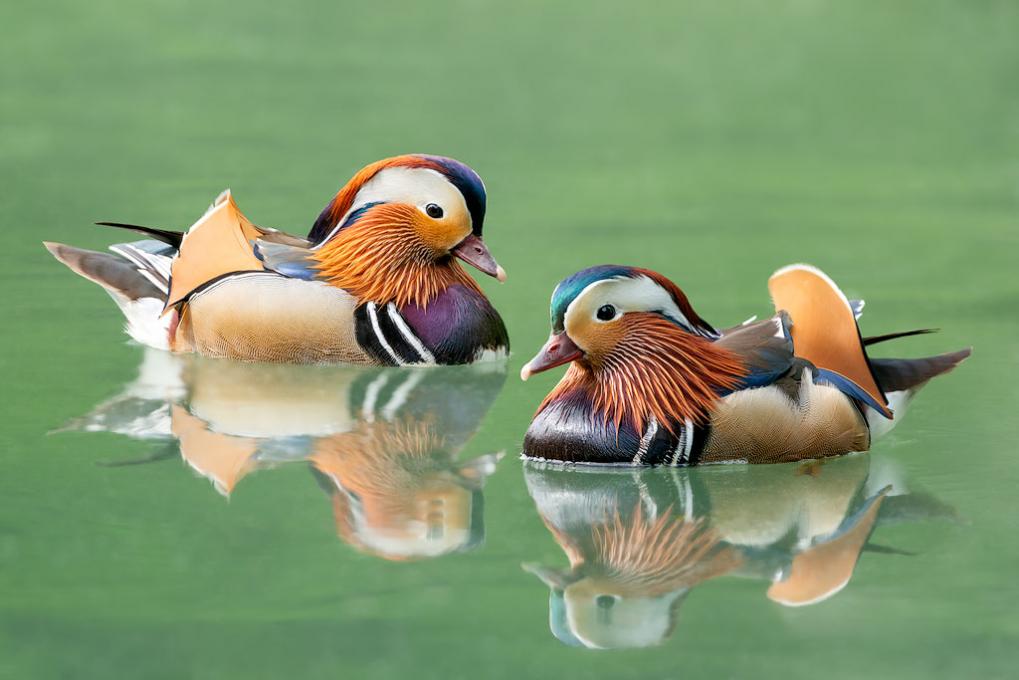

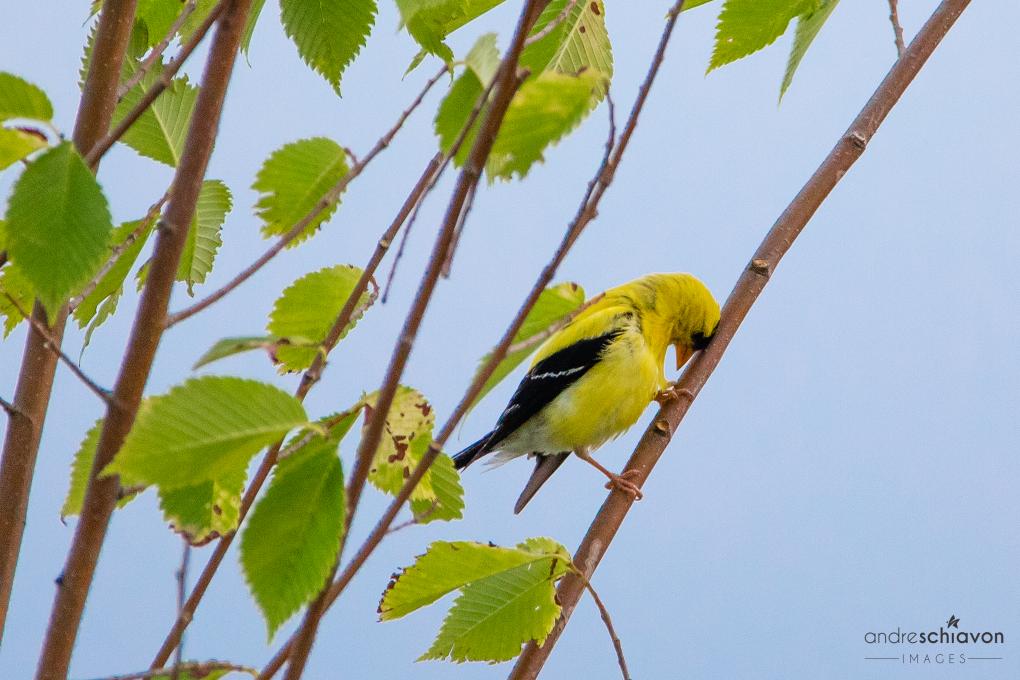
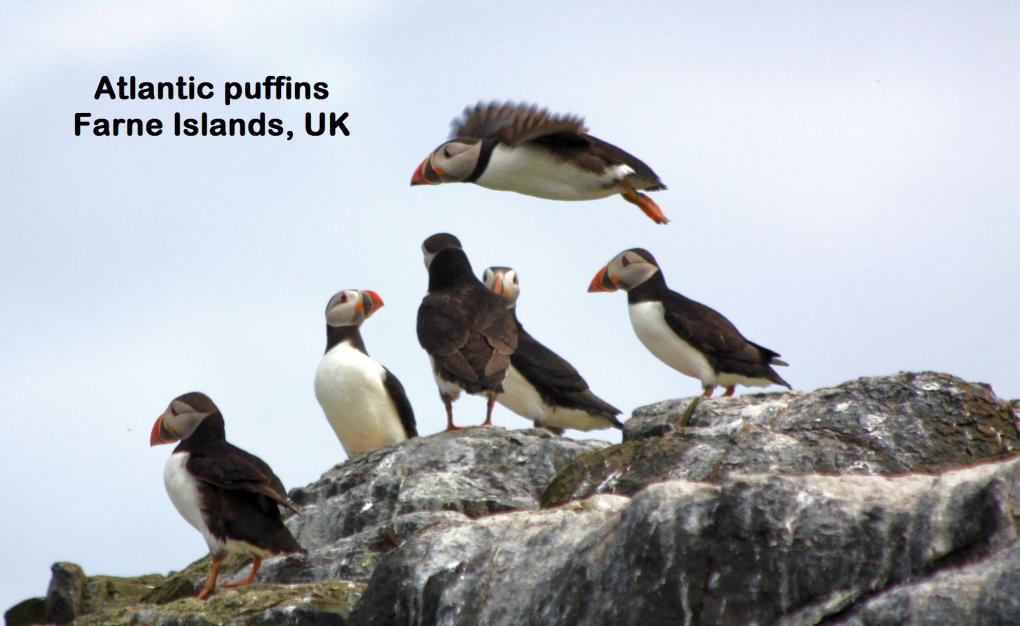
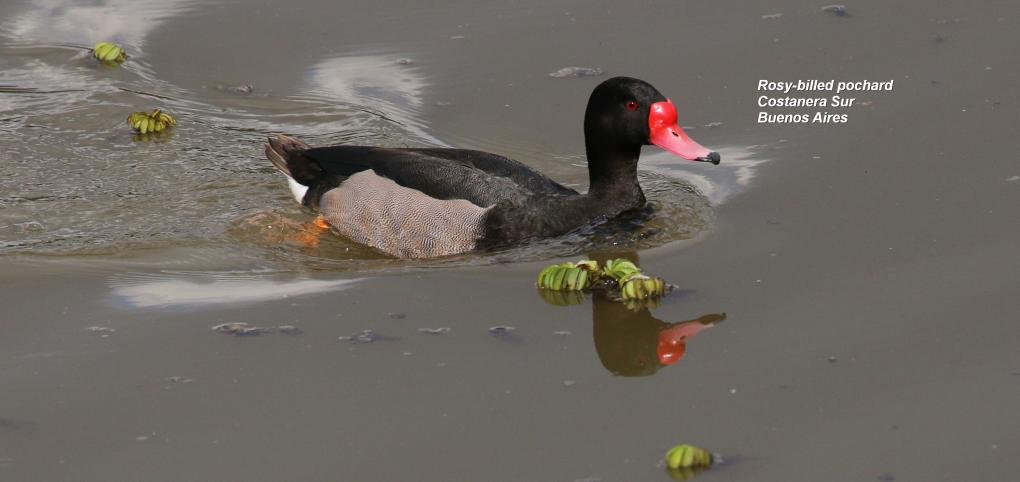

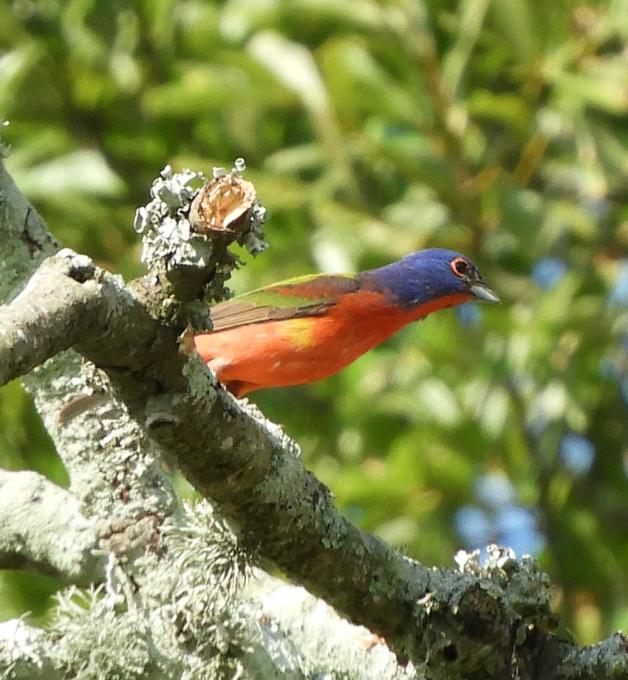
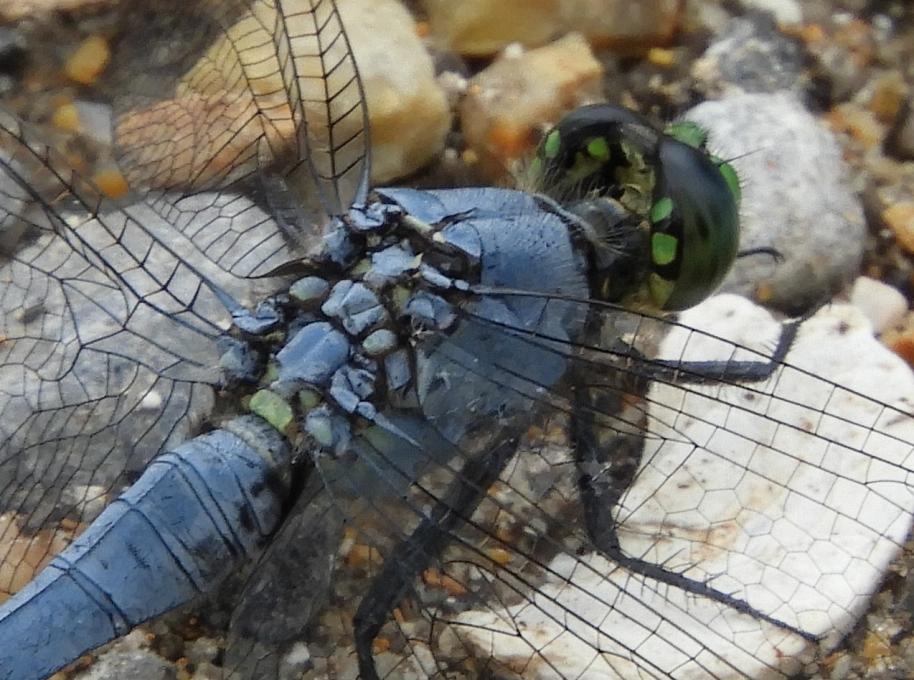

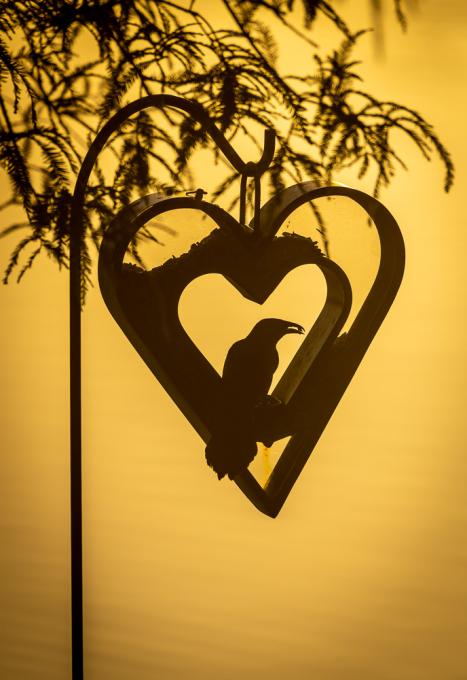


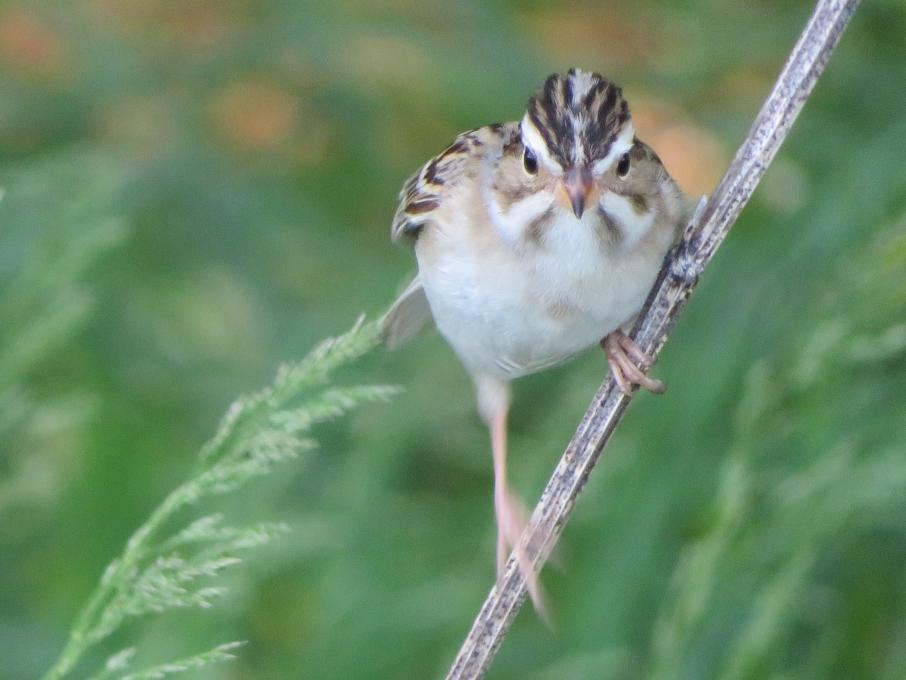
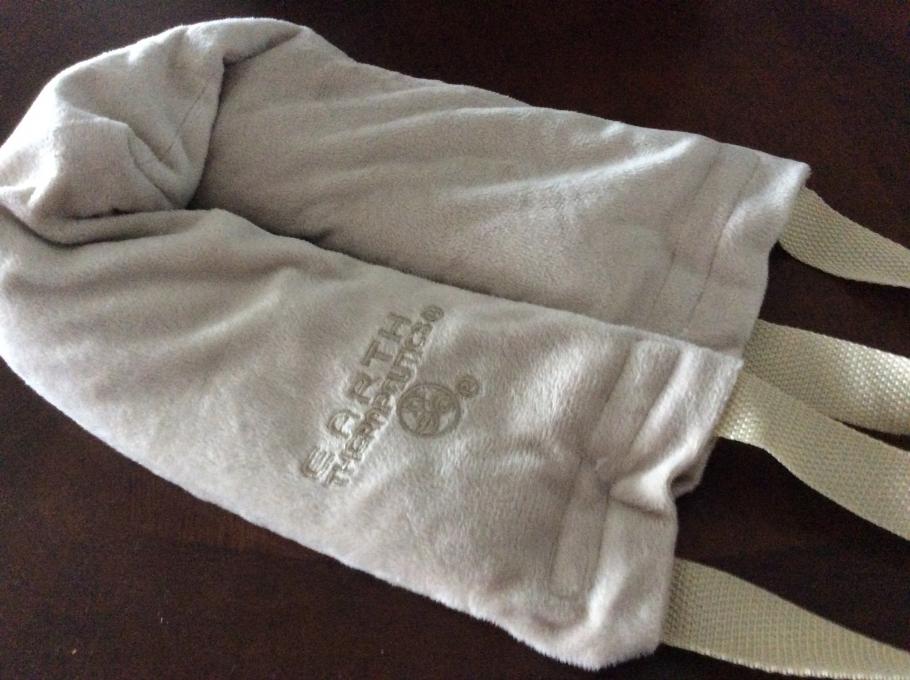

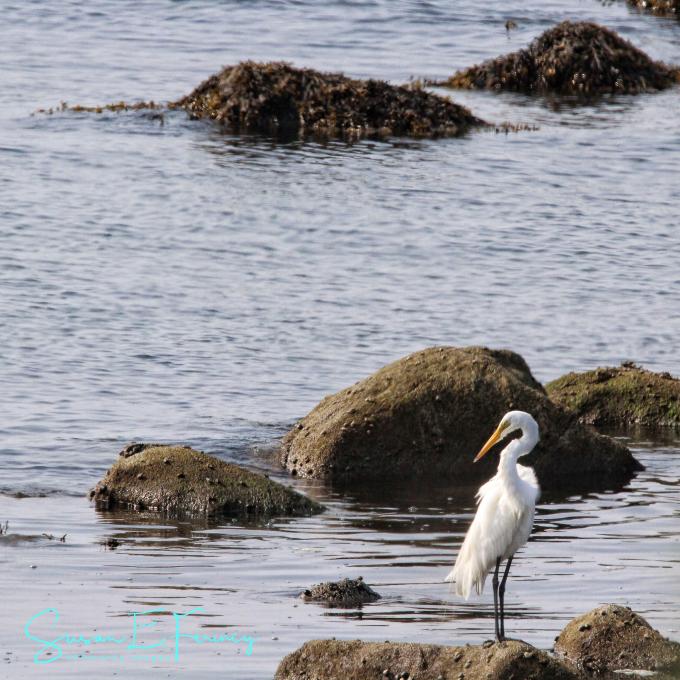

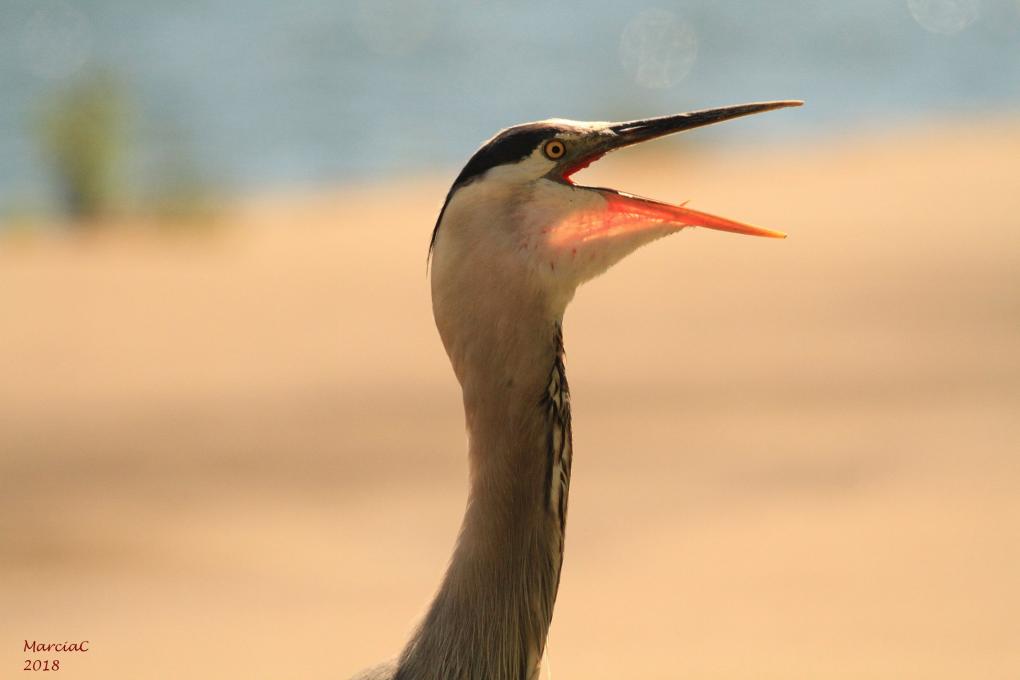 I love birding and taking photos of what I see as I am observing birds in my area. I continue to challenge myself by looking at various bird behaviors and identifying behaviors I have not seen before. I also want to extend my photography skills by learning proper settings in various situations, the use of light when photographing birds, and photographing birds in all types of weather. I have a Canon 7D that I use with the 100-400 mm L series lens. I wanted to upgrade my camera because I have been using the camera for sometime and felt like i would like to use a full frame and compare the full frame with the APSC camera. I recently purchased the Canon 5D Mark IV and can use this camera with my 100-400 mm lens and some other lenses that I have.
One of the interesting things I like to photograph is the behaviors of birds in all kinds of weather. The photos I included in this post are of a Great Blue Heron and a Ring-billed Gull. In both cases the birds were in extremely hot temperatures, and what fascinated me was the open-beaked breathing of each bird. I took the photos and in my research found that this is a way for birds to cool off, similar to a dog panting to cool off. Although you cannot see it in the still pictures, when watching each bird, with their open beaks, their throat muscles moved quickly, in a quivering motion, another addition to the cooling off process.
I love birding and taking photos of what I see as I am observing birds in my area. I continue to challenge myself by looking at various bird behaviors and identifying behaviors I have not seen before. I also want to extend my photography skills by learning proper settings in various situations, the use of light when photographing birds, and photographing birds in all types of weather. I have a Canon 7D that I use with the 100-400 mm L series lens. I wanted to upgrade my camera because I have been using the camera for sometime and felt like i would like to use a full frame and compare the full frame with the APSC camera. I recently purchased the Canon 5D Mark IV and can use this camera with my 100-400 mm lens and some other lenses that I have.
One of the interesting things I like to photograph is the behaviors of birds in all kinds of weather. The photos I included in this post are of a Great Blue Heron and a Ring-billed Gull. In both cases the birds were in extremely hot temperatures, and what fascinated me was the open-beaked breathing of each bird. I took the photos and in my research found that this is a way for birds to cool off, similar to a dog panting to cool off. Although you cannot see it in the still pictures, when watching each bird, with their open beaks, their throat muscles moved quickly, in a quivering motion, another addition to the cooling off process. 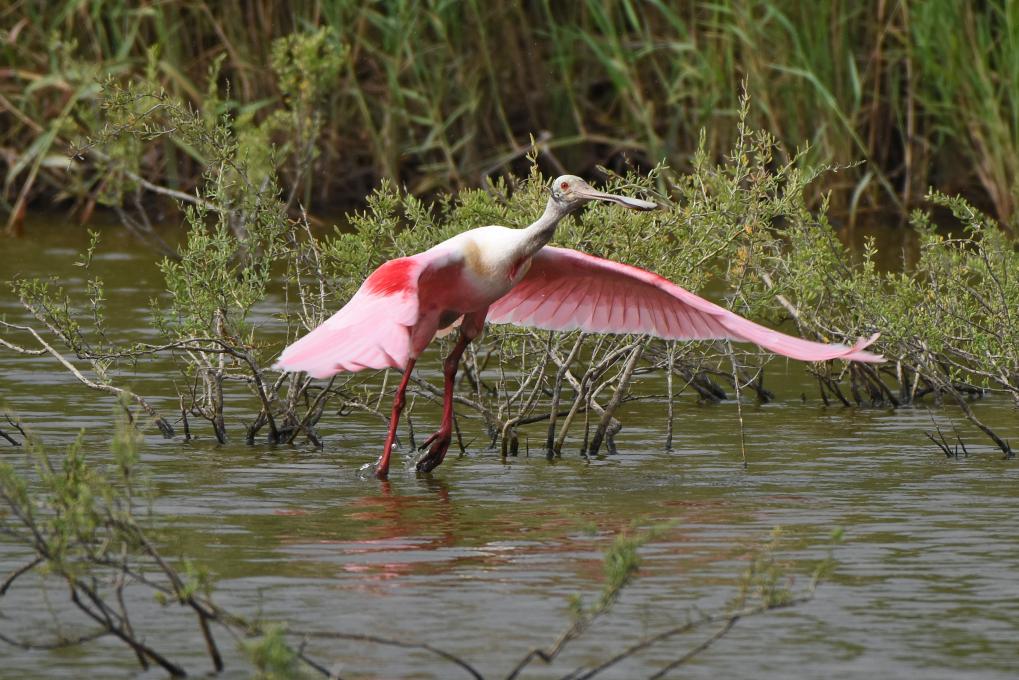
 I am taking this course to hopefully help me with taking pictures of birds in flight. I use a Nikon D7200 with a Nikkor 200-500mm lens which I love. It takes great still and birds in flight shots. It is a bit heavy but I have had it for 3 years now so I don't notice the weight any more. I would say the only downside for me is the 5.6 f stop. It makes shooting in low light situations challenging but I have been trying to learn about manual mode to aid with this. I got a Gimbal tripod (Manfrotto with a Sevenak gimbal head) this mad a huge difference for me when sitting at a blind. I also do a lot of shooting from my "mobile bird blind" (Toyota 4Runner). I also have a bird-blind for my yard made from PVC pipe and mosquito netting. Super simple and light and I have even had birds land on top of it while I am in it. I am interested to see what other cameras and lens combos others use.
I am taking this course to hopefully help me with taking pictures of birds in flight. I use a Nikon D7200 with a Nikkor 200-500mm lens which I love. It takes great still and birds in flight shots. It is a bit heavy but I have had it for 3 years now so I don't notice the weight any more. I would say the only downside for me is the 5.6 f stop. It makes shooting in low light situations challenging but I have been trying to learn about manual mode to aid with this. I got a Gimbal tripod (Manfrotto with a Sevenak gimbal head) this mad a huge difference for me when sitting at a blind. I also do a lot of shooting from my "mobile bird blind" (Toyota 4Runner). I also have a bird-blind for my yard made from PVC pipe and mosquito netting. Super simple and light and I have even had birds land on top of it while I am in it. I am interested to see what other cameras and lens combos others use. 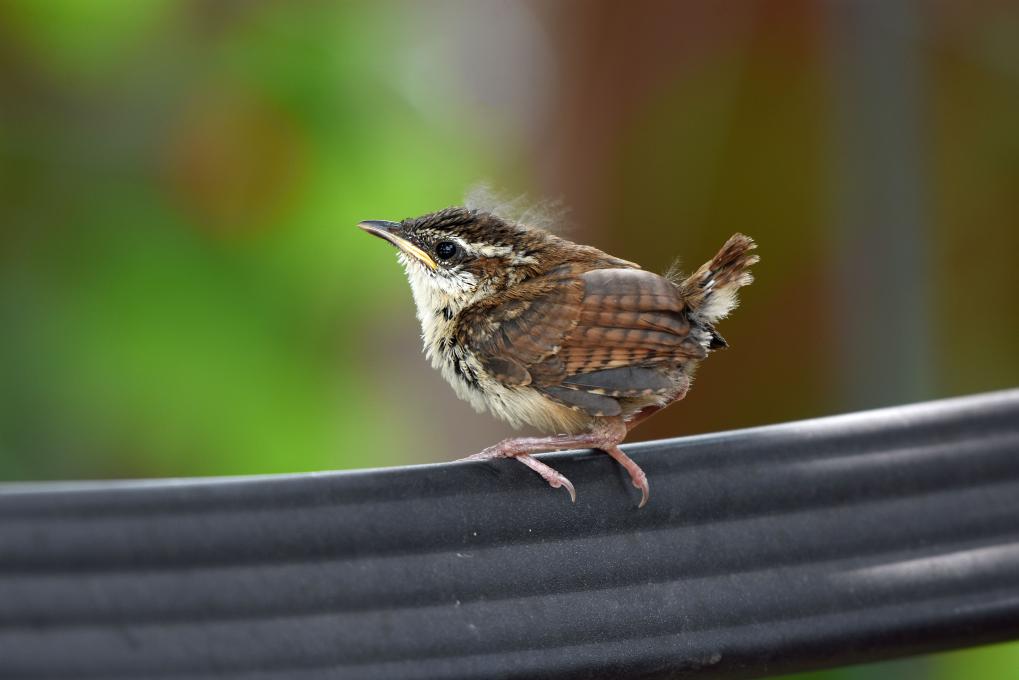

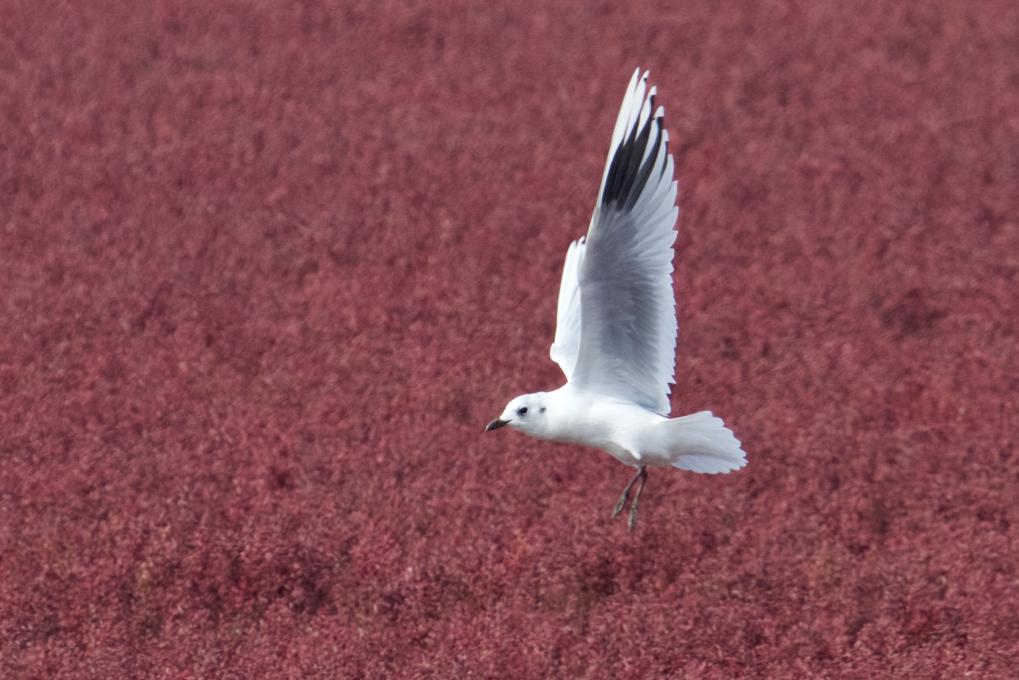
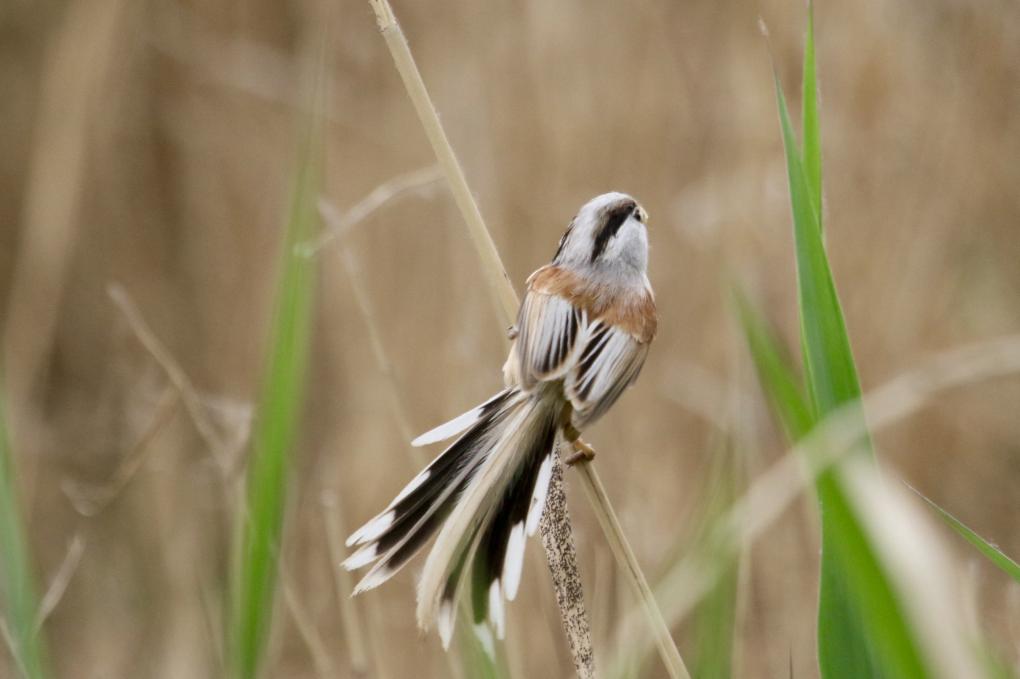
 A very important factor is to think hard about what level of equipment is appropriate for you. Probably the first thing to consider is how much money are you intending to put into this? I am not familiar with the others, but I have a lot of hours on the Canon system
I started with an old Canon T3, but soon changed to a Canon 7D II and am extremely happy with it. I have tried a variety of lenses, both Canon and Sigma and would rate the Canon 100-400mm f/4.5-5.6 L IS II to be the best overall choice. With good light the 7D will handle autofocus with the 1.4 teleconverter. I like the crop factor body as I am working semi-professionally from Panjin, Liaoning, China and birds (or any wildlife) are generally very hard to get close to.
I also currently have a Sigma 150-600mm Contemporary lens as my main use lens, which I am happy with, but it is heavy and I intend to end up using it only on tripod with a gimble. Next trip back to the USA I plan to get a new Canon 100-400mm and a 1.4 teleconverter. This all gives me what would be considered to be minimal mid range or semi-professional equipment but it is not necessary to spend as much as I have to obtain some very good photos. (7D about $1400; Canon 100-400mm about $2200; Sigma 18-300mm f/3.5-6.3 about $400; Sigma 150-600 Contemporary about $900)
For a low cost rig as a starter or as good enough for those who just want to share on social media, one could consider something more like the Canon Powershot SX70. I also have one of those and it makes a great travel camera. I often use it to just have something along with me on a walk in the park when I am not really expecting anything special. It is a mirrorless with a non-interchangable lens, but it is a superzoom going from a 35mm equivalent of 21-1365 and is very light weight! Not the best for low light situations, but overall I am very happy with it and you have everything you need to get some excellent birding photos. Best of all, it looks like it is currently going for about $550 USD, a lot less than the $3600 to step up to a minimal 7D birding rig.
The new Canon R5 & R6 give me a serious case of GAS (gear acquisition syndrome), but that like the 5D is stepping up to professional level gear and the prices reflect it. I might justify a 5Ds sometime in the future if the prices drop enough with the introduction of the mirrorless competition.
I probably won't be checking back here much, but I do have a thread on the birdforum.net which is an excellent place to find a supportive world wide community. My thread is at: https://www.birdforum.net/showthread.php?t=301937 and I would be glad to help anyone who posts to it.
A very important factor is to think hard about what level of equipment is appropriate for you. Probably the first thing to consider is how much money are you intending to put into this? I am not familiar with the others, but I have a lot of hours on the Canon system
I started with an old Canon T3, but soon changed to a Canon 7D II and am extremely happy with it. I have tried a variety of lenses, both Canon and Sigma and would rate the Canon 100-400mm f/4.5-5.6 L IS II to be the best overall choice. With good light the 7D will handle autofocus with the 1.4 teleconverter. I like the crop factor body as I am working semi-professionally from Panjin, Liaoning, China and birds (or any wildlife) are generally very hard to get close to.
I also currently have a Sigma 150-600mm Contemporary lens as my main use lens, which I am happy with, but it is heavy and I intend to end up using it only on tripod with a gimble. Next trip back to the USA I plan to get a new Canon 100-400mm and a 1.4 teleconverter. This all gives me what would be considered to be minimal mid range or semi-professional equipment but it is not necessary to spend as much as I have to obtain some very good photos. (7D about $1400; Canon 100-400mm about $2200; Sigma 18-300mm f/3.5-6.3 about $400; Sigma 150-600 Contemporary about $900)
For a low cost rig as a starter or as good enough for those who just want to share on social media, one could consider something more like the Canon Powershot SX70. I also have one of those and it makes a great travel camera. I often use it to just have something along with me on a walk in the park when I am not really expecting anything special. It is a mirrorless with a non-interchangable lens, but it is a superzoom going from a 35mm equivalent of 21-1365 and is very light weight! Not the best for low light situations, but overall I am very happy with it and you have everything you need to get some excellent birding photos. Best of all, it looks like it is currently going for about $550 USD, a lot less than the $3600 to step up to a minimal 7D birding rig.
The new Canon R5 & R6 give me a serious case of GAS (gear acquisition syndrome), but that like the 5D is stepping up to professional level gear and the prices reflect it. I might justify a 5Ds sometime in the future if the prices drop enough with the introduction of the mirrorless competition.
I probably won't be checking back here much, but I do have a thread on the birdforum.net which is an excellent place to find a supportive world wide community. My thread is at: https://www.birdforum.net/showthread.php?t=301937 and I would be glad to help anyone who posts to it. 
 A grey shrike-thrush and two hoary-headed grebes.
A grey shrike-thrush and two hoary-headed grebes. 
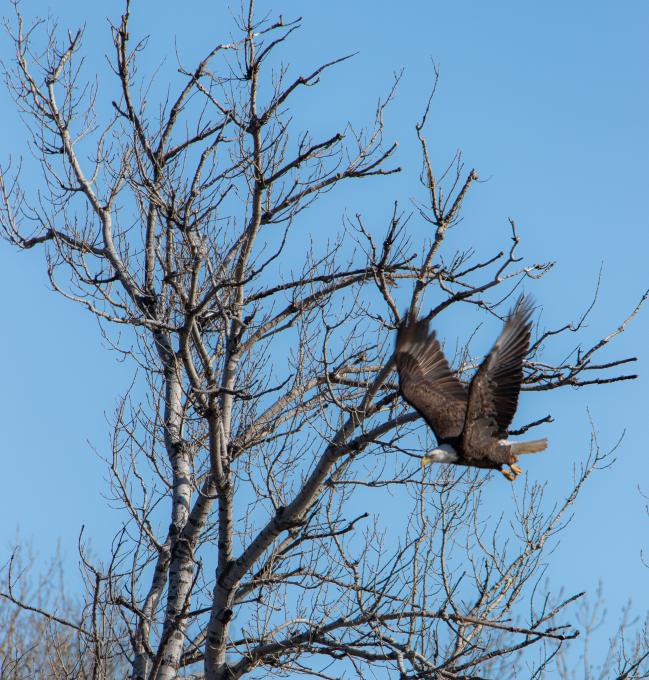

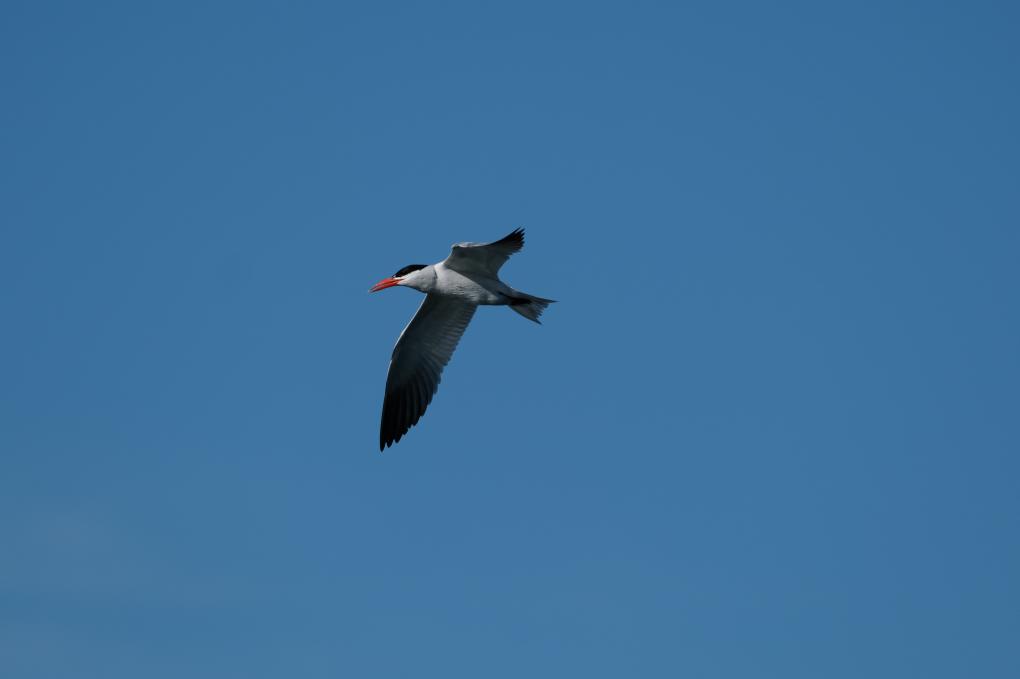
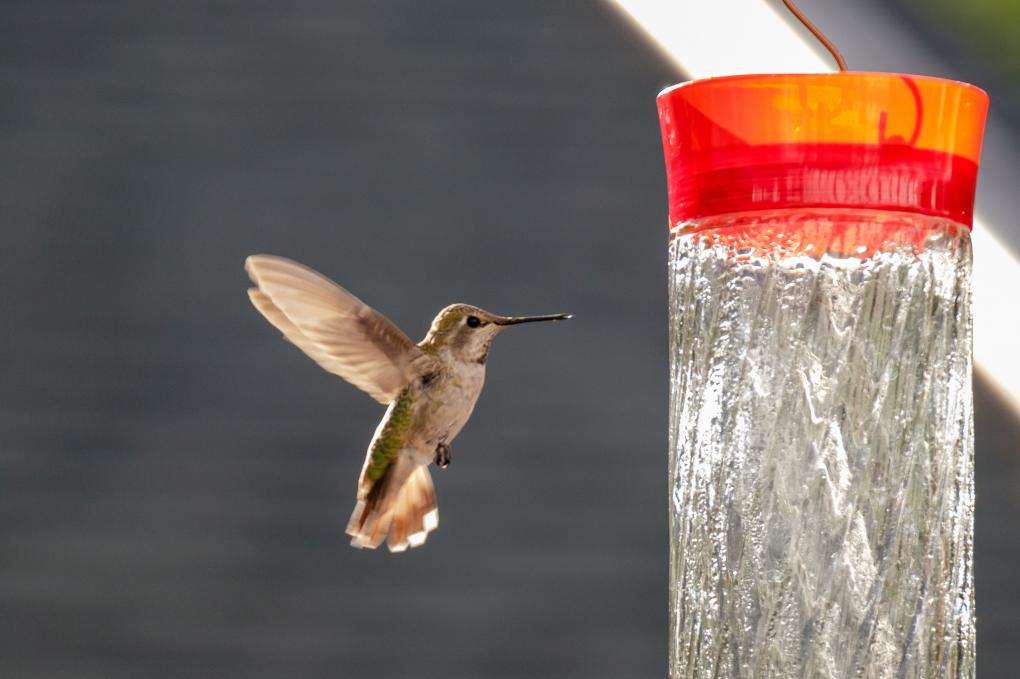



 Sorry I replied to myself, I forgot to share example of photos with my Fuji Film camera - a House Finch (actually two of them), close-up in my backyard - and a male Wood Duck from a distance in a regional park.
Sorry I replied to myself, I forgot to share example of photos with my Fuji Film camera - a House Finch (actually two of them), close-up in my backyard - and a male Wood Duck from a distance in a regional park. 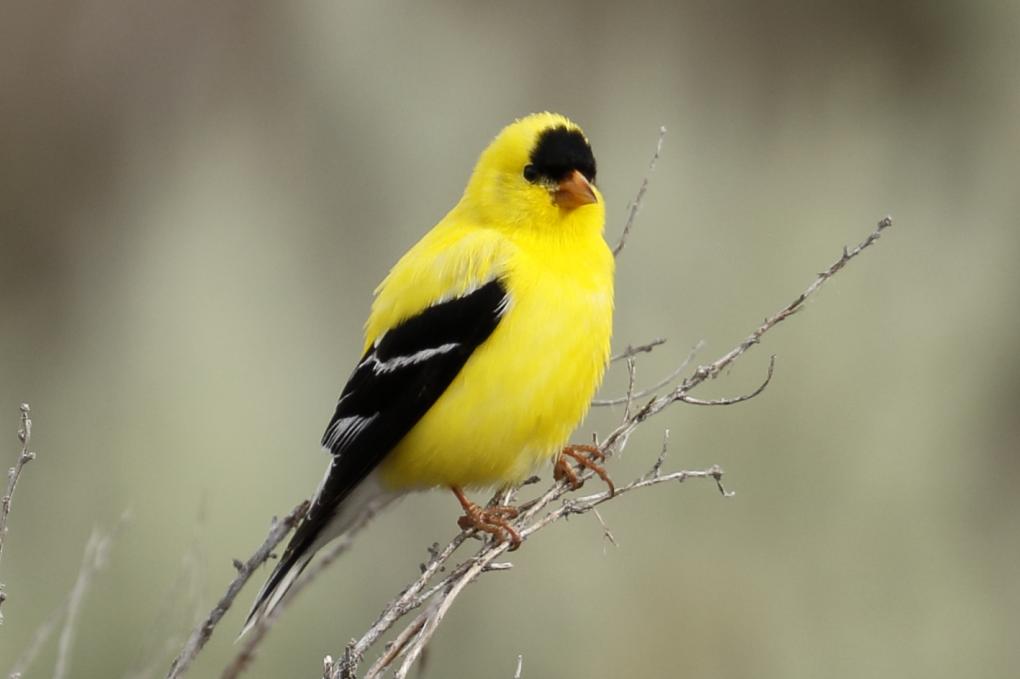
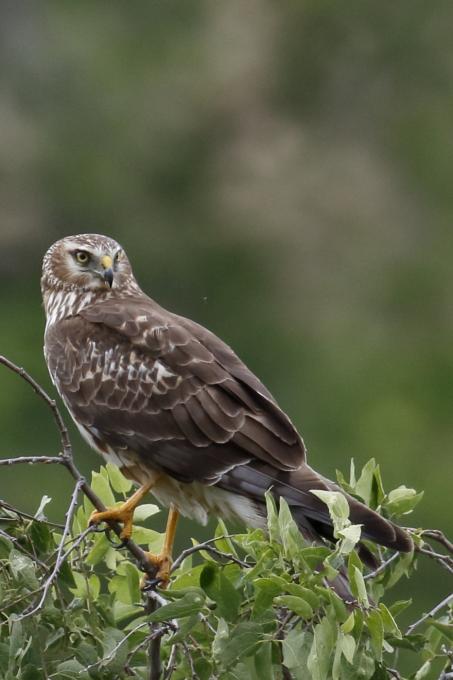


 Does Melissa respond to the discussion group? I would like to get a teleconverter for these to lenses and was wondering if there is one specific converter that would work for both.
Does Melissa respond to the discussion group? I would like to get a teleconverter for these to lenses and was wondering if there is one specific converter that would work for both.